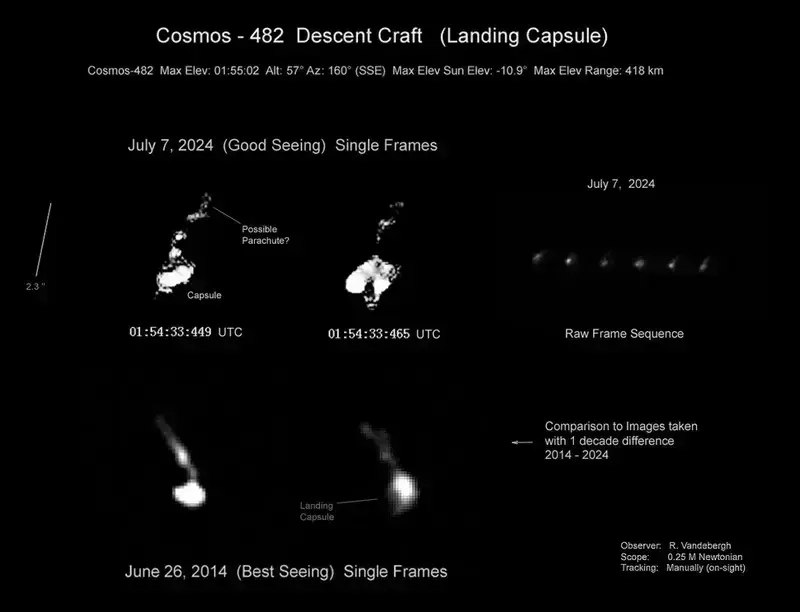Experts have published images showing an unknown structure next to the 53-year-old probe “Kosmos 482.” It could be a deployed parachute.
The probe “Kosmos 482,” measuring one meter in length and weighing 495 kg, was launched in 1972. It was built to study Venus as part of the former USSR’s “Venera” program. The probe was intended to investigate the environment of this planet. However, due to an accident, it broke into pieces. One of those pieces has been orbiting ever since.
After news broke about the probe’s return to Earth around May 10, satellite monitoring specialists analyzed images of the spacecraft and discovered an unknown object following it.
“A structure is attached to the capsule. It could be a parachute, but that’s just a guess for now!” wrote Ralph Vandeberg, a Dutch astronomer and astrophotographer, on his social media page.

What else did the scientists report?
“Kosmos 482” was built as a sibling probe to the research devices “Venera 7” and “Venera 8.” Both of them visited Venus, the publication reported. Live Science In particular, the “Venera 7” probe was the first to successfully land on this planet, while “Venera 8” transmitted data from it for over 50 minutes before burning up in its extremely hot atmosphere.
The descending apparatus may return to The Earth intact. Ralph Vanderberg received the first set of high-resolution images in July 2024. On April 29, 2025, he published them online. Compared to the images of the object taken in June 2014, the newer images show a mysterious elongated structure next to the probe.
Even if this structure is indeed a parachute, it is unlikely to withstand the entry of the device into the dense layers of our planet’s atmosphere at a speed of about 242 km/h.
According to Vanderberg, this parachute will likely burn up upon entering the atmosphere and “will not serve the function of slowing down” the device.
Currently, observers are monitoring cosmic objects They are eagerly watching the descent of the “Kosmos 482” probe. Since it was designed to withstand the extreme conditions of Venus, scientists believe that the device is quite likely to reach the surface of the Earth. Researchers have already proposed some theories regarding the location of its landing. It may occur between 52 degrees north latitude and 52 degrees south latitude. However, there are no precise predictions.
